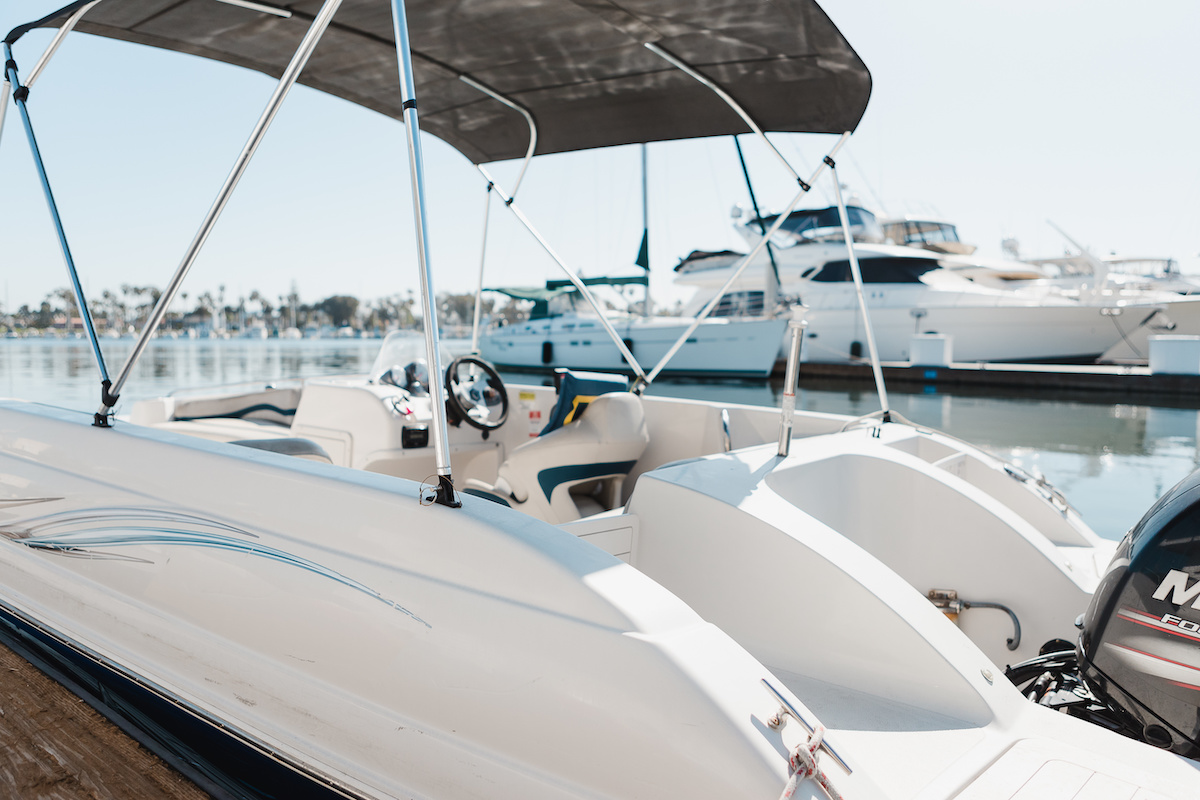Some people consider boat maintenance to be a chore, while others enjoy a sense of satisfaction when they work on their boat. Whichever category you may fall into, one thing is for sure: we all want our boats to look as clean and slick as possible. And when you’re looking at a shiny gelcoated hullside nothing draws the eye faster than a scrape, scratch, or ding. Fortunately, minor gelcoat repair isn’t a huge deal. In fact, we can boil down the process into seven easy steps.
How to Repair a Boat's Gelcoat
- If the problem is a minor scuff or scratch, try wet-sanding and see if that makes it disappear.
- Assuming wet-sanding doesn’t cut it, get a gelcoat repair kit with gelcoat paste and hardener, pigments (if the gelcoat is colored), a plastic spreader or putty knife, and release film.
- Prep the scratch.
- Mix the gelcoat paste with pigment until you’ve matched the boat’s color (if necessary) and then mix in the hardener.
- Fill the scratch with the gelcoat paste, smooth it with the spreader, and then cover it.
- After allowing it to fully cure, wet-sand the repair smooth.
- Polish and then wax the repaired area.
Wet-Sanding Scratched Gelcoat
Often very minor scratches and scrapes can be wet-sanded away. Try using 400-grit wet-sanding sandpaper, followed by 600-grit. Always use a sanding block so you don’t over-sand one particular spot, and use a gentle, circular motion. If the scuff or scratch disappears, great. If not, head for the marine supply store and get your gelcoat repair kit.
Prepping a Scratch in Gelcoat
Before you can fill a scratch in gel coat, you need to make sure it’s shaped in a “V”. Otherwise, if the scratch’s shape is irregular the gelcoat paste may bridge either side and leave a gap underneath in some areas. If this happens, your repair won’t last. We know this will be painful, but you’ll need to use the corner of a metal putty knife or a flat-head screwdriver and run it along the scratch, so the gouge is in that V shape from end to end. For larger scratches, using a Dremel may be necessary. Then wash and dry the area to be sure it’s perfectly clean before beginning the repair.

Matching Gelcoat Color
If your boat has white gel coat you’re in luck, but if it’s colored you’ll have to add pigment to the gelcoat paste until you match it with the boat’s gelcoat. For most people, this is the most challenging part of the job. Add pigment in very small amounts and mix it thoroughly until you think you have a match, then put a drop onto the gelcoat to be sure (since you haven’t added hardener yet, the gelcoat paste will be easy to wipe off).
When you’re happy with the match, it’s time to add the hardener to the gelcoat paste. Measure the amounts carefully and follow the manufacturer’s instructions exactly; otherwise the gelcoat paste may harden too quickly or not at all. And after adding the hardener be sure to mix it in thoroughly.
Filling Gelcoat Scratches
Now, it’s time to fill the scratch in. Using your plastic spreader or putty knife, be sure to completely fill in the scratch and leave no air pockets behind. Work the gelcoat paste into the void, allowing for a bit of extra so it bulges somewhat out of the scratch. Gelcoat shrinks a bit when it cures, and you’ll be sanding the area smooth anyway, so applying slightly too much paste is always better than applying too little.
When you’re satisfied the gouge is completely filled and then some, use the release film to cover the gelcoat paste (plastic wrap, zipper-lock baggies, and wax paper will work, too. The important thing is simply to seal off the gelcoat paste from exposed air so it can cure properly).
Finishing the Gelcoat Repair
When the gelcoat paste is fully cured, it’s time to wet-sand the area smooth. Again, use 400-grit and then 600-grit wet-sanding sandpaper (you can start with 220-grit first, if the repair surface is very uneven), along with a sanding block, to ensure a smooth finish. When it’s slick and even, follow up by applying a rubbing compound or an aggressive polish with a soft cloth. Finally, apply a coat of wax to the repair and the surrounding area.
That’s it—mission accomplished! See, we told you fixing scrapes and scratches in gelcoat wasn’t a big deal. And now that the job’s complete you’re ready to get back out on the water and enjoy the boating lifestyle in your clean, slick-looking boat.
Read Next: How to Clean a Boat
You Might Also Like:
- Basic Boat Maintenance Guide
- Spring Start-Up Checklist
- Boat Repair: Choosing a Marine Mechanic
- Boat Storage: What Are My Options?
- How to Winterize Your Boat
